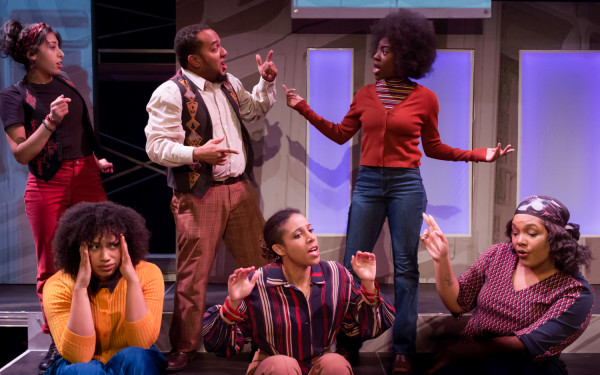OK Computer Riot
A Look Back at Concordia’s Greatest Protest, 45 Years Later
Concordia University, which took its name from Montreal’s motto of “well-being through harmony”, was once the site of flagrant strife. From the way the university’s administration treats its own history, a more accurate inspiration would be “well-being through sticking your head in the sand.”
45 years ago, students protesting against apparent institutionalized racism flooded an entire floor of a major academy, ignited a fire, and defenestrated bulky computers, letting them shatter on Mackay Street after a nine-storey drop. A heavy snowstorm of myriad punch cards swarmed the streets. The Computer Riots cost Sir George Williams University $2 million. It was one of the most monumental student riots in Canadian history.
“It’s important to remember past incidents because they exemplify what has to be done for students to curtail injustices,” said Ben Prunty, president of the Concordia Student Union.
The incident sparked the implementation of student representation in university decision-making and the creation of the Ombuds Office.
Yet the administration has never fully acknowledged its role in these crucial changes, preferring to sweep the whole story under the rug.
“It’s not in the university’s interest to promote disruptive student leadership,” said Prunty. “They want everything to run smoothly. They have an image to maintain.”
Talking to students at Concordia, it seems that the administration’s efforts have been successful. Most students are simply unaware the Sir George Williams Affair (as it’s sometimes known) ever occurred.
The story goes that in the spring of 1968, five West Indian students accused biology professor Perry Anderson of unfair treatment. The class Anderson taught was essential for students to be able to enter medical school. The administration at Sir George ordered an inquiry, but the students felt that nothing would change.
Concordia history professor Ronald Rudin’s classes have touched on the events that transpired back then.
“The investigation, based upon the grades that the students were given, didn’t prove that the professor was necessarily biased or prejudiced,” he said.
White and black students united, organized protests and demanded that the administration change its policies. Notably, they wanted to sit on the committee that oversaw tribunals.
_900_319_90.jpg)
On January 29, 1969, close to 200 individuals walked out of the university-organized hearings on the case and occupied the Computer Centre on the ninth floor of the Hall Building for two weeks.
When peaceful negotiations led to a dead end on February 11, all hell broke loose. In the aftermath, some protesters were imprisoned while many students from the Carribean had no choice but to return without a degree.
Two days after the riot, the accused biology professor was reinstated.
Following the merger of Loyola College and Sir George Williams University, Concordia allowed students the right to make decisions concerning their academic lives. In effect, the CSU is a direct progeny of the Computer Riots.
With the merger, Concordia completely revamped its approach to students. The university has embraced and even boasted of a diversity of gender, ethnicity, language, and mobility in its student body. All this has stemmed from the hearings into claims of racism that started the 1969 student mobilization in the first place.
“The students at the time quite appropriately pointed out that the committee that made up the document [clearing the accused professor of wrongdoing] had no student representation,” said Rudin. “As a consequence, the university entirely changed its procedure.”
Still, the Computer Riot remains buried in Concordia’s archives, the online version of which contains a careful summary of the incident under the flippant section heading “Quickie Histories.” The university makes no effort to educate their students about their own history, although Rudin maintains that current resources are adequate.
“Anybody can go to the archives and read the story for themselves,” Rudin said. “The university hasn’t prevented anyone from staging events on campus.”
Jaggi Singh, a member of the Quebec Public Interest Research Group at Concordia, an activist organization that raises awareness about the Riot every year on its anniversary, thinks that students have done more than enough.
“In 2001, the student union made a point of commemorating and inviting some of the people involved in the Riot,” said Singh. “ I think that’s the way to do it. I don’t think we should count on official authority structures to do it for us. We should be doing it ourselves.”
Singh thinks that Concordia has adopted the wrong approach in relation to its own beginnings.
“Even the university, when it does refer to these events, the terms they use are literally whitewashing,” said Singh. “Calling it ‘the Sir George Williams Incident,’ not really talking about the fundamentals of what was happening. It was a riot. A police attack on students. A battle against racism.”
Ronald Rudin agrees that the school should come to grips with what happened, if only because of the sheer magnitude of the changes it triggered. But as the legacy of the Riot approaches the half-century mark, official commemoration is no guarantee.
“Maybe in the 50th anniversary that would be a good thing for the university to do, but that’s for the administration to decide,” Rudin said.
Video by Julian McKenzie and Shaun Michaud


2_600_375_90_s_c1.jpg)


